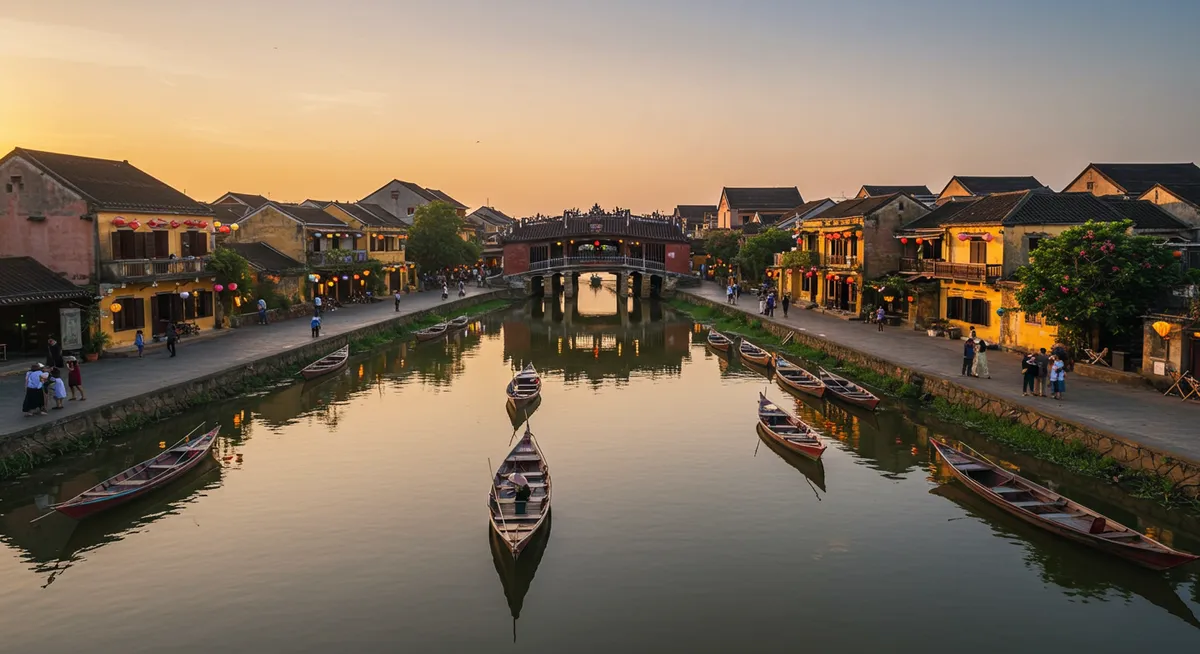
Best Time to Visit Hoi An, Vietnam: Your Guide
Table of Contents
Want to find the best travel deals for this destination? Chat with our travel hacking specialist!
Get Travel HacksCategory: best-time-to-visit-hoi-an-vietnam
When to Visit Hoi An: A Seasonal Guide
Having explored Hoi An extensively over several trips, I've learned that timing truly impacts your experience in this charming ancient town. Choosing the best time to visit Hoi An Vietnam can elevate your journey from good to absolutely unforgettable. Let's delve into the nuances of its climate and how different seasons shape what you'll enjoy.
Hoi An's Climate Explained: Know Before You Go
Hoi An, nestled in Central Vietnam, experiences a distinct tropical monsoon climate with two main seasons: dry and wet. Understanding these patterns is crucial for planning your trip, whether you're eager to explore the Ancient Town or relax by the beach. Typically, the dry season brings consistent sunshine and comfortable temperatures, ideal for sightseeing and outdoor activities. Conversely, the wet season, while sometimes challenging with heavy rains or even floods, offers a different, greener perspective and fewer crowds. As an experienced traveler to Vietnam, I've found that even the wet season has its unique charm, provided you're prepared. The key to enjoying your visit lies in matching your expectations with the prevailing weather conditions, ensuring a pleasant stay in this captivating city.
The Dry Season: Sunshine & Festivals (February to May)
Without a doubt, February to May is often considered the best time to visit Hoi An Vietnam for most travelers. During these months, the weather is consistently sunny, with pleasant temperatures ranging from 25°C to 30°C, making it perfect for exploring the ancient streets and cycling through rice paddies. The humidity is relatively low, ensuring comfortable outdoor activities. This period also coincides with numerous vibrant festivals, like the Lunar New Year (Tet) if it falls in February, which adds an extra layer of cultural immersion. My personal tip: book accommodations well in advance, especially for popular areas like the Ancient Town, as this is peak tourist season. Consider adding a few days to your Hoi An itinerary to fully soak in the atmosphere.
The Wet Season: Green Landscapes & Fewer Crowds (June to January)
The wet season in Hoi An, from June to January, presents a different kind of charm. While you might encounter more rain, particularly between September and December when monsoons are at their heaviest, the landscapes transform into lush, vibrant green. Temperatures remain warm, though humidity increases. For those who prefer fewer crowds and a more tranquil experience, this period can be rewarding. Occasional flooding, especially in October and November, can affect parts of the Ancient Town, but locals are well-prepared, and it often adds to the town's unique character. If you're planning your visit during these months, pack light rain gear and waterproof footwear. Despite the rain, there are still plenty of things to do in Hoi An Ancient Town, including cooking classes or lantern-making workshops.
Shoulder Months: Balancing Weather & Value (Late January, Early February & September/October)
For travelers seeking a balance between good weather and fewer crowds, the shoulder months offer an excellent compromise. Late January and early February often see the tail end of the dry season, providing pleasant temperatures before the peak tourist rush, often overlapping with the exciting Lunar New Year celebrations. Similarly, late September and early October, while marking the beginning of the heavier rains, can still offer sunny spells interspersed with showers. This period typically sees lower prices for flights and accommodation, providing great value for your trip to Hoi An. It's an opportune moment to delve into Hoi An street food without battling large queues, and to experience the local culture more intimately.
Frequently Asked Questions
When is the rainiest month in Hoi An?
Is Hoi An hot all year round?
Can I visit Hoi An during the Tet holiday?
Choosing the best time to visit Hoi An Vietnam truly depends on your travel style and what you hope to experience. Whether you prefer the sun-drenched days of the dry season for extensive exploration or the quieter, greener charm of the wet season, Hoi An offers a unique allure year-round. Prepare accordingly for the weather, embrace the local culture, and you're guaranteed an unforgettable journey to this UNESCO World Heritage site. For comprehensive planning, explore our Hoi An Travel Guide to maximize your trip.